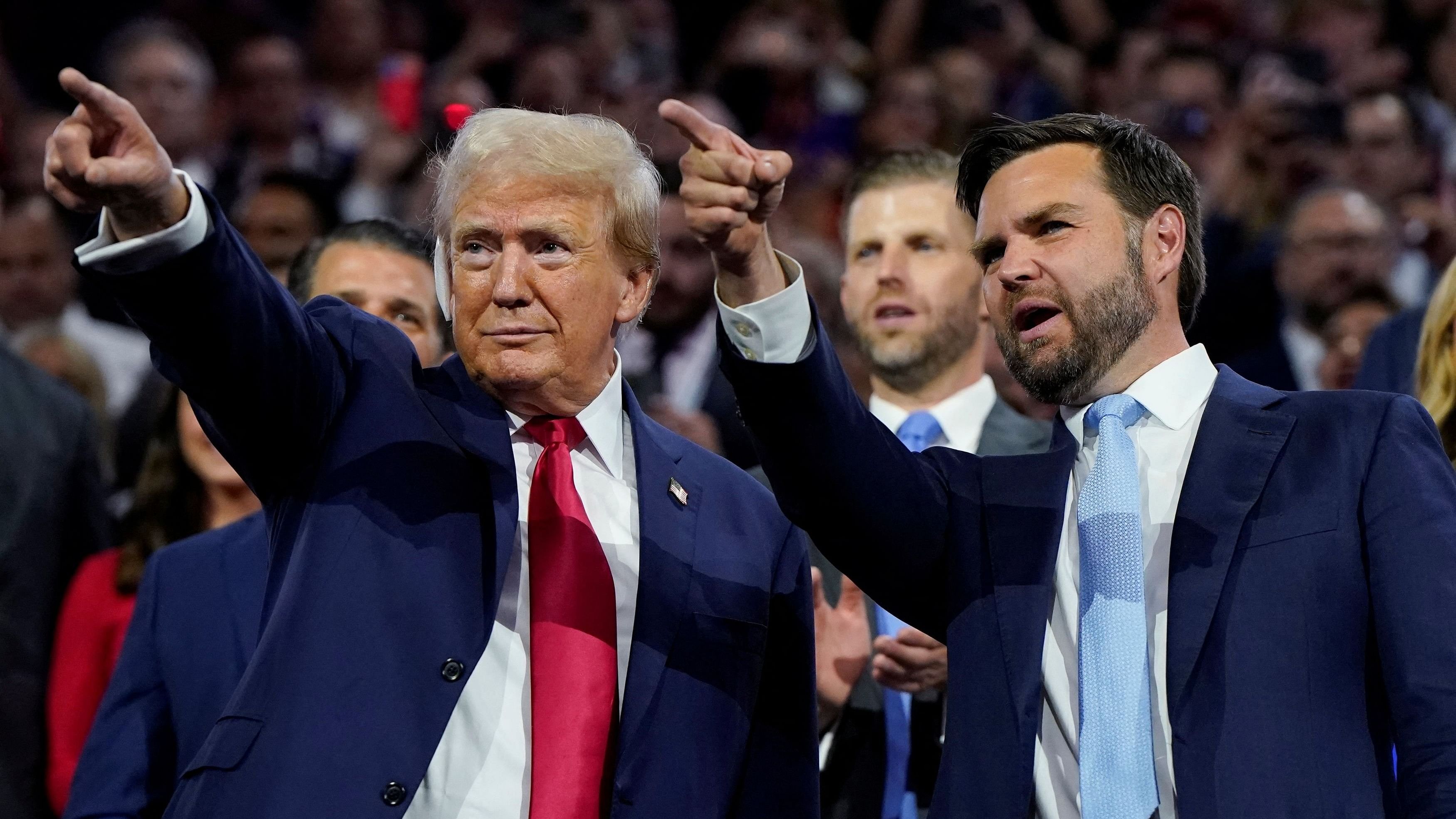
Republican presidential nominee and former US President Donald Trump and Republican vice presidential nominee JD Vance
Credit: Reuters photo
I’m not going to speculate about the effect of Saturday’s attempted assassination of Donald Trump on the 2024 presidential race. I will, however, make one observation: Some on the political right are using the attack to imply that the criticism of Trump’s past efforts to overturn the results of the last election, and any suggestion that he poses a threat to democracy, is now out of bounds.
But two things are true at the same time: Political violence is unacceptable, full stop. And the efforts by Trump and his most hard-core supporters to undermine American democracy continue to be unacceptable. As Republicans head into their convention this week, it’s important to understand the potential ramifications of both their official platform, I wrote last week, and their unofficial aspirations, embodied by Project 2025.
Project 2025 is a blueprint by and for some of Trump’s close allies, put together by the Heritage Foundation, to ensure that if Trump wins in November, MAGA will hit the ground running. It seeks to provide “both a governing agenda and the right people in place, ready to carry this agenda out on day one of the next conservative administration.” The particulars are laid out in a roughly 900-page document, “Mandate for Leadership,” with specific action plans for many parts of the federal government.
How radical is the Project 2025 agenda? Earlier this month, Kevin Roberts, Heritage’s president, said that the country is in the midst of a “second American Revolution” that will be bloodless “if the left allows it to be.”
Republicans seem, however, to have belatedly realized that much of what’s in Project 2025, especially its multi-pronged attack on reproductive rights, is deeply unpopular. Trump has tried to distance himself from the project, claiming last week that he knows “nothing” about it, even though quite a few of the people who’ve worked on it are former Trump officials and aides, and even though in 2022 Trump told a Heritage conference that its people were “going to lay the groundwork and detail plans for exactly what our movement will do.”
More generally, since Trump has never shown himself to be a policy wonk, there’s every reason to believe that if he wins he will, as he did in his first term, leave a lot of the granular policymaking to people who do sweat the details — so it’s more than reasonable to think of Project 2025 as a guide
to what could happen in a second Trump term.
There are many, many things to object to in Project 2025, but I’d argue that the most important thing is right at the front, in the section titled “Taking the Reins of Government.” It basically calls for replacing much of the federal work force, which consists mainly of career civil servants somewhat insulated from partisan pressures, with political appointees who can be hired or fired at will.
Trump made a significant move in this direction near the end of his presidency, issuing an executive order that created a category of political appointee, Schedule F, which would have allowed the replacement of many career officials with partisan loyalists. President Biden rescinded that order, but Project 2025 would bring it back in some form — probably on a much larger scale.
In some ways this would represent a giant step into the past. For much of the 19th century the federal government operated on the “spoils system,” in which new administrations fired many officials and replaced them with political supporters. This system had big problems: Many appointees lacked the experience and competence to do their jobs, and the constant turnover was an open invitation to cronyism and corruption.
In 1883, less than two years after President James Garfield was assassinated by a deranged and disgruntled man seeking a political appointment, Congress passed the Pendleton Act, which created a professional civil service in which most employees can’t be fired or demoted for political reasons. There were very good reasons for that reform at the time,
but the case for insulating
most government employees from partisan pressure is far stronger now.
You see, back in 1883 the federal government had a much smaller footprint on American life; federal spending was only a bit more than 2 percent of the economy. Today’s federal government is about 10 times as large and also has a huge impact through its regulation of everything from pollution to antitrust enforcement.
Now imagine politicizing the large parts of our government that are currently relatively apolitical. It’s all too easy to
imagine an unscrupulous president using the power this would give him to reward friends and punish opponents across the nation.
Remember, during the early stages of the Covid-19 pandemic, Trump openly suggested that he might not help states whose governors didn’t support him. If he wins and Project 2025 goes into effect, he’ll be in a position to engage in that kind of arm-twisting on a massive scale.
For now, let’s just say that it’s every bit as menacing as critics report. And despite Trump’s disingenuous attempts to distance himself from the project, it gives us a very good idea of what a second Trump term could be like. NYT